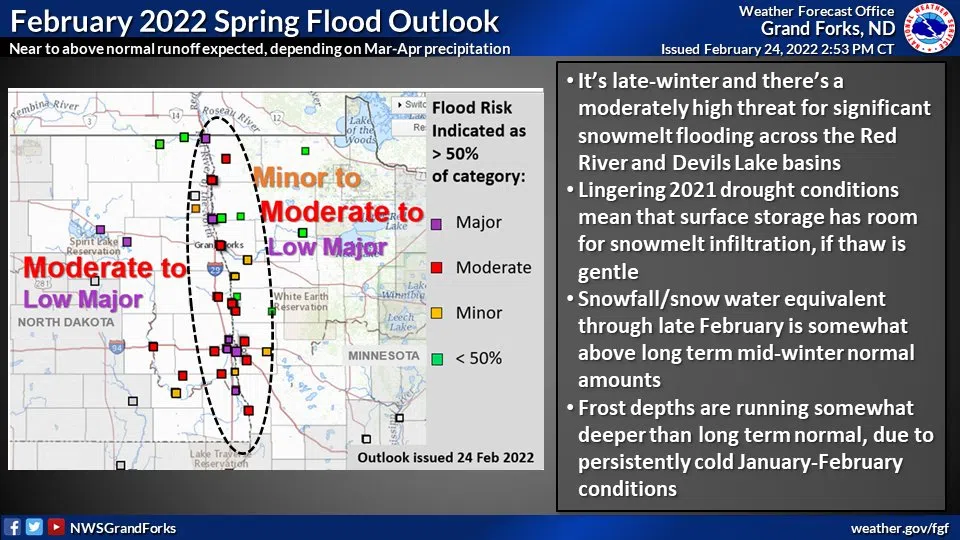GRAND FORKS, N.D. – National Weather Service forecasters offered some calming news Thursday to Fargo-Moorhead residents who might be having flooding flashbacks after another in a long line of blizzards turned some backyards into toboggan hills: Don’t believe your eyes.
The weather service’s most recent spring flood outlook does reflect an increase in chances for significant flooding in Fargo-Moorhead, which has seen record and near-record high water at various times in the last quarter of a century.
However, the Red River Valley is coming off a record dry year in 2021 and there’s a trend toward near-normal temperatures and precipitation from mid-March into April. And while the snow piles look ominous in some areas, there isn’t an unusual amount of water in them, the outlook shows.
“Yes we’ve had a lot of blizzards this year, more than the past,” weather service hydrologist Amanda Lee said. “But a lot of those events didn’t come with that heavy snow. It came with just an inch or two of snow or the wind was blowing around the snow that was already present.”
Weather service meteorologist Greg Gust said some of those high-velocity storms may move snow from open country to the cities and into shelterbelts and “you may get what seems like more snow” in Fargo and Grand Forks, the two largest metropolitan areas along the north-flowing Red River.
The last warning of a serious flood in Fargo came in 2019, when city officials activated Sandbag Central by moving garbage trucks out of a large storage building and bringing in machinery, sand and thousands of volunteers to fill 24 sandbags every 6 seconds. That flood threat did not materialize, thanks mostly to a favorable spring thaw.
More than 6 million sandbags were needed to save Fargo during the record-setting 2019 flood. It still resulted in the destruction of more than 100 structures and millions of dollars in damages.
Perhaps the most eye-opening numbers in Thursday’s outlook was the possibility of a 3- to 4-foot bump along Devils Lake in northeastern North Dakota, the state’s largest natural body of water. Lee noted that while it’s still early in predicting the lake crest, which won’t come until June, it could be a “pretty hefty rise.” While it wouldn’t impact the city of Devils Lake, it would flood township roads and farmland, officials said.





